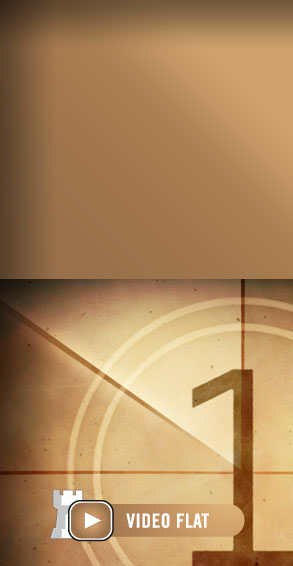Attacking with major pieces and opposite-coloured bishops
You'll find the Mihail Marin's complete article with video introduction, training tasks, games and analyses in ChessBase Magazine #195 (May/June 2020).
Even though the classification into the categories below may seem clear enough, we will notice a relatively wide variety of models (especially in the first one). I have sorted the examples in such a way that the transition between the possible situations flows gradually.
-
A) Positional attacks
-
B) Defensive resources against positional attacks
-
C) Beware of sacrifices!
Needless to say, we will find elements corresponding to B) and C) in the A) section, for instance.
La actualidad en formato digital. Lo más importante de la actualidad ajedrecistica de los últimos meses en su ordenador. Teoría y práctica.
A) Positional attacks
We will start with a relatively simple example, featuring White's unchallenged control on the dark squares.
Question 1: How should White strengthen his attack? You'll find the solutions to the training tasks on the bottom of this article.
But even though White's play seemed simple in the next phase of Shirov,A - Pinter,J 1-0, Shirov needed to take a concrete decision at the critical moment.
In Karpov,A - Larsen,B 0-1, the focus is on the phase before Black achieved almost complete control on the light squares.
Question 2: Due to his excellent control on light squares and better structure, Black's compensation for the pawn is beyond any doubt. Which is the best way to develop the initiative?
At this moment, only the central and queenside weaknesses are obvious, but White soon had similar problems on the kingside, too. We will also notice that even during what was basically a relatively short and mainly positional battle, many concrete issues can be hiding away. When given a chance to use them to retain a viable position, Karpov failed to do so.
In Huebner,R - Kortschnoj,V 0-1 Black used his control on the light squares both for the invasion and for questioning White's stability on the dark squares.
Question 3: White has the more compact structure and a blockade on d4, but Black is very active and his king is safer. Which is the best way to defend the bishop on d4?
Nepomniachtchi,I - Carlsen,M 0-1 features an interesting try to generate attacking chances for Black, involving play on both light and dark squares.
Question 4: Can you find an imaginative way to turn the position double-edged and generate at least some winning chances for Black?
The fact that White immediately went wrong is suggestive of the practical difficulties when handling these positions over the board.
The last game from this section is really complex and less typical than the previous ones.
Question 5: White is better developed but at this point the position may seem optically unclear. Which is the best way to retain the initiative with White?
In Petrosian,T - Fischer,R 1-0 none of the players had clear control of the squares corresponding to the colour of his bishop. As a result, the game features other strategic and concrete ideas.
B) Defensive resources against positional attacks
We are familiar already with this theme, as several examples above include (played or missed) good defensive moves.
In Ehlvest,J - Huebner,R 1-0 Black unexpectedly faced concrete problems after a long phase with insufficient white compensation for the sacrificed pawn(s).
Question 6: How should Black react to the threat?
Black's position at this stage is less dangerous than it may seem, but it is suggestive that such a strong player chose the virtually worst defence.
In Anand,V - Serper,G 1-0 White's initial achievements were by far less impressive than in the previous game.
Question 7: White has perfect control on the light squares but his king's residence has been weakened. His kingside attack is ready to start while Black still needs a way to sacrifice on b3 for instance. Taking all these into account, what would you play with Black?
C) Beware of sacrifices!
Sacrifices are usually associated with tactics. But strictly speaking, this mainly refers to the first example, Wei,Y - Bai,J 1-0.
Question 8: At this point, White's extra pawn is only meant to offer a better defence of his king. But it is his activity which should worry Black more. If you were to offer a rook exchange on d8, which one would you choose?
White has an obvious advantage but the position seems to be static. And yet, the strong player with Black surprisingly allowed a winning combination.
In the next example the sacrifice mainly serves positional purposes. Our starting point in Dominguez Perez,L - Giri,A 1-0 has a pronounced positional character.
Question 9: How should Black react to the brutal advance of the h-pawn?
When carrying out the mutual attacks on opposite wings both sides had to take into account the structural situation. White started what could have been considered a brilliant positional attack involving a sacrifice, if Black hadn't had a hidden counter-resource at his disposal turning the tables. But Giri failed to find it and White obtained a winning attack without special problems.
La actualidad en formato digital. Lo más importante de la actualidad ajedrecistica de los últimos meses en su ordenador. Teoría y práctica.
Solutions
1: 33.c4! This strong move reveals the main drawback of ...e6-e5. The pawn on d5 does not have the natural support of a colleague. Black has to spoil his coordination in order to maintain his stability on the light squares.
2: g7-g5 – This is the best plan, as it undermines White's stability on the dark squares. And Black should play it at once, so that White does not have the time to organise his counterplay based on d4-d5.
3: g2-g4 – This is the most principled move, restricting Black's control on the light squares and clearing space for the king.
4: f7-f5 – Indeed, this was the move played by Carlsen, causing White to go wrong immediately.
5: d5-d6 – The most logical and strongest move. Black's bishop was active already and White's was just dreaming of being thrown into the fight.
6: Tb8-b1 – This is the strongest reaction, allowing Black to partly dismantle WHite's attacking mechanism.
7: g7-g6 – Since Black cannot create queenside threats quickly, taking prophylactic kingside measures is best.
8: Solution: Rb8-d8 – This is the right answer. With his f7-square defended, Black is in no immediate danger even though his position remains worse.
9: e5-e4 – Without this (even more brutal) resource, Black's kingside would fall apart.
You'll find Mihail Marin's complete article with video introduction, training tasks, games and analyses in ChessBase Magazine #195 (May/June 2020).
Available on DVD+booklet or for download including booklet in pdf.

FIDE Candidates 2020 with analyses by Giri, Gelfand etc. Firouzja, Vidit, Vitiugov, Duda and Navara comment on their games from Prague. 11 articles with new repertoire ideas. Videos by Werle, King and Marin. Training in tactics, strategy and endgame!
.jpeg)























